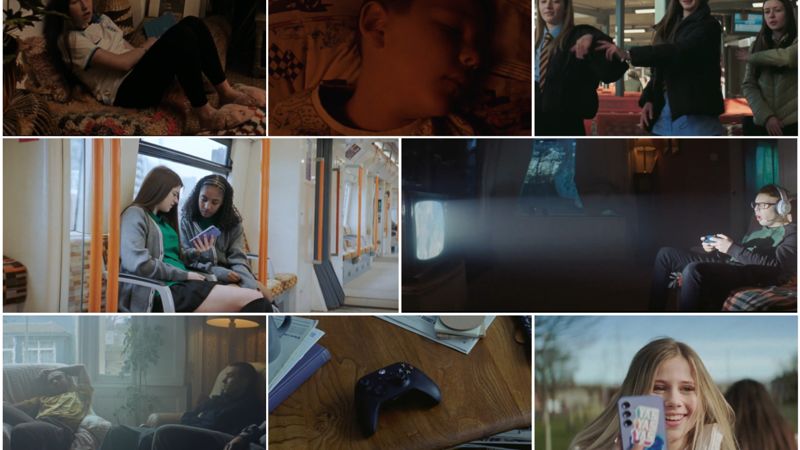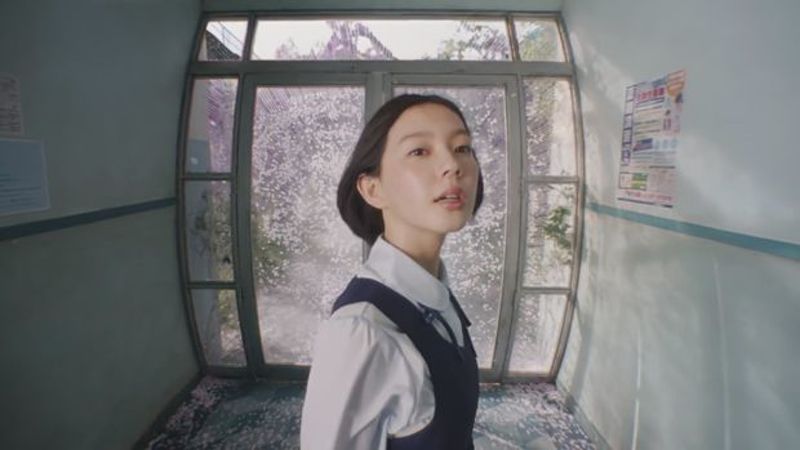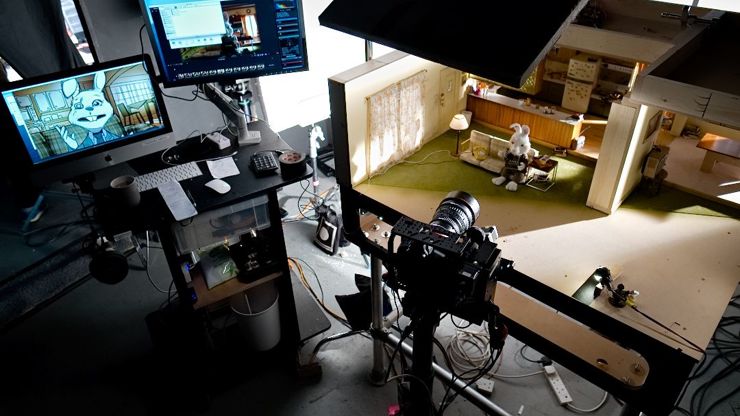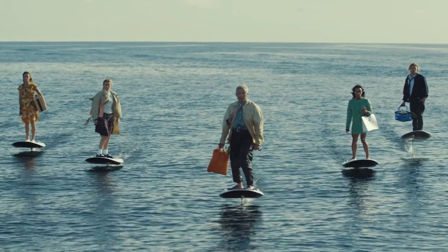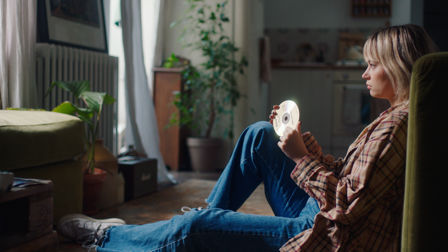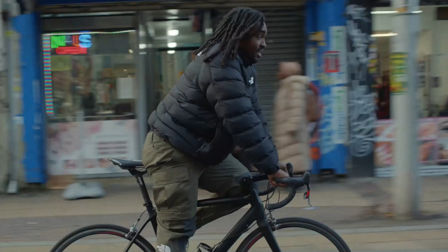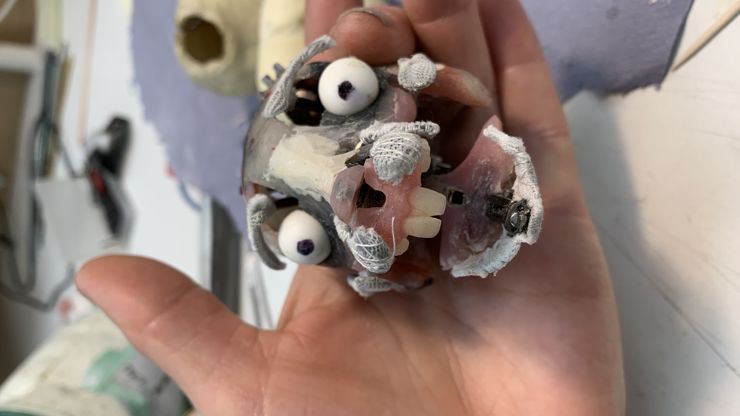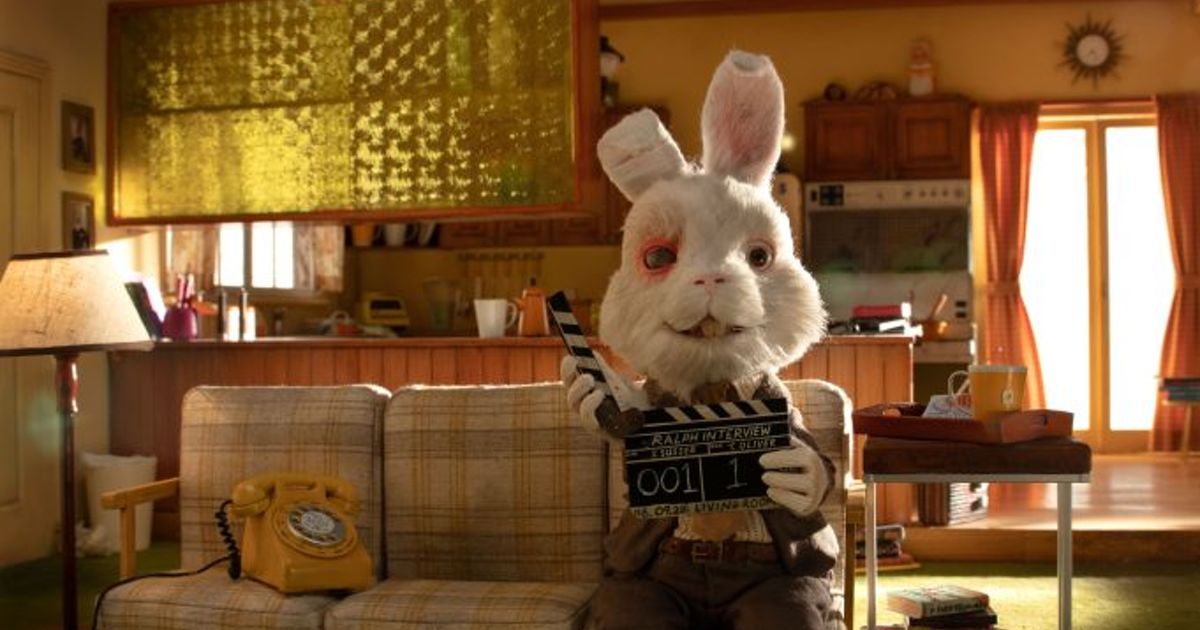Andy Gent creates a hare-raising puppet
Professional puppet-maker Andy Gent, a longtime Wes Anderson collaborator, shares the intricate and detailed process behind creating an empathetic character that embodies hope while refusing to sugar-coat the horrific reality of lab animals.
A 25-year veteran of puppetry, Andy Gent (working with Arch Model Studio) has created characters for features like Isle of Dogs and Fantastic Mr. Fox.
His newest work, a PSA for Humane Society International, shows the hidden cruelty that animals undergo during product testing. Balancing gentle humanity and honesty, Save Ralph doesn't shy away from getting graphic, creating a sense of horror and empathy. We sat down with Gent (well, we emailed a few times) to ask some questions about how the process works when creating a new puppet.
Why did you decide to use puppets for this commercial?
Spencer [Susser], the director and writer, and HSI always knew it had to be puppet animation for the realism and connectivity you get with actual three-dimensional, walking, talking characters and their worlds. There isn’t quite anything like it in 2D or 3D computer animation that I believe brings so much reality and honesty to the screen especially when we can embrace all the foibles of furry puppets like Ralph. This particular piece needed every bit of that connection to hold the viewer and tell such a difficult story, somewhat graphically and with integrity. You just instantly gain a lot of credit knowing that the world and character you are looking at are real and exist somewhere. Stop motion and puppets were a perfect fit.
Credits
powered by
-
- Production Company Vespa Pictures
- Director Spencer Susser
-
-
Unlock full credits and more with a Source + shots membership.
Credits
powered by
- Production Company Vespa Pictures
- Director Spencer Susser
- Executive Producer Donna Gadomski
- Producer Spencer Susser
- DP Tristan Oliver
- Editor Spencer Susser
- Lead Animator Tobias Fouracre
- Head of Puppet Department Andy Gent
- Talent Ricky Gervais
- Talent Taika Waititi
- Talent Zac Efron
- Talent Olivia Munn
- Executive Producer Troy Seidle
- Producer Jeff Vespa

Credits
powered by
- Production Company Vespa Pictures
- Director Spencer Susser
- Executive Producer Donna Gadomski
- Producer Spencer Susser
- DP Tristan Oliver
- Editor Spencer Susser
- Lead Animator Tobias Fouracre
- Head of Puppet Department Andy Gent
- Talent Ricky Gervais
- Talent Taika Waititi
- Talent Zac Efron
- Talent Olivia Munn
- Executive Producer Troy Seidle
- Producer Jeff Vespa
Can you talk about some of the puppet inspirations for Ralph?
As with all projects we discussed, what we needed our actors to do and say and portray, we knew that Ralph would need to look like a real test rabbit with white fur and pink eyes who also shows all the signs of damage caused by testing. He needed to tell his story from his imagined home that should look like it’s been used by many other "Family" members. We worked to create a sense of history in this place in conjunction with the years of animal testing that was at the base of our inspiration.
By making Ralph walk upright on his back legs, a little Peter Rabbit-like, and clothed to humanize him, he becomes easily relatable, inspired by a mixture of many classic anthropomorphic characters. His clothes were a bit American Hustle, inspired 70’s early 80’s style, to make it feel like everything was used and inherited from all those rabbits who had been there before.
Did you ever have to pull back from showing something graphic?
We looked at lots of very uncomfortable images of the effects of testing on rabbits for authenticity and accuracy. We needed Ralph to be loved by our audience so they could embrace his story. Ralph essentially is trying not to alarm us in the documentary and puts on a brave face despite the conditions he is in. It's definitely a fine line, some images couldn’t work, they were just too distressing to portray.
In the end, Ralph’s eyes are very raw and red from the chemicals tested on him, and as the audience works out that he's now blind it's difficult and sad in equal measure. Imagine some of the reference pics we looked at! The real animals would have just turned the viewer away. We wanted the audience to be educated but not entirely disgusted by the look of the piece itself. Hopefully what we managed was raw enough and graphic for a wide audience, but not too safe so as to miss the message.
What was the setup like?
I work out of Arch Model Studio, my Puppet and set workshop here in Hackney Wick East London. This is the same space were we built the puppets for Wes Anderson's Isle of Dogs. The animation and filming was all done in our new studio, Arch Films, conveniently just next door so everything was born and raised in the East End.
How do you design puppets nowadays?
I still design traditionally through drawing and or sculpting in plasticene from a brief or description or references. I prefer directly sculpting the designs as it often resolves 2D to 3D translation sooner. That said, I have a Z-brush and so we do utilize CGI sculpting too. It depends on the project really.
What are the steps you take to create a puppet?
Research and sketching before sculpting and then we go to the modelmaking. I like to say the clock starts when the sculpt goes to mould-making. Most of our technical processes begin with a mould. From there we can make the mechanical skeletons that the animator relies on to pose a puppet, called the armature. We then cast a rubber body, a manakin, for costume and fur to pattern against.
Eventually, we marry all these pieces together and set them in silicone or latex to give them muscle and flesh. Next, we paint the piece, punch in hair, make wigs, eyes, teeth, props, shoes, belts, you name it, and then get them camera-ready before animating. It’s a lot of skilled work and requires a little time and a lot of processes. Then it’s given to an animator who takes it into a small dark booth with some lights and a camera and their magic begins. It's such a great process
Do you think that the audience for puppet animation is changing?
Always. It’s constantly evolving, with new generations of fans joining all the time, perhaps due to the many avenues you can view work on and the amazing directors who love and play with the art form in their films. Plus, now the ease of which people, and kids, in particular, can make animations too. It amazes me how many more people can and do make stop motion than ever before.
What’s the next frontier for stop-motion puppetry?
Our only frontier is within our own imagination I suppose that’s it. Technically we are still finding new materials and the ease of which we can now 3D print is breathtaking.
)
